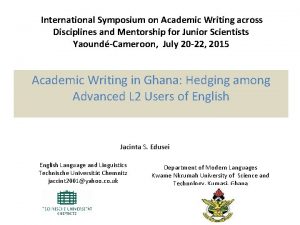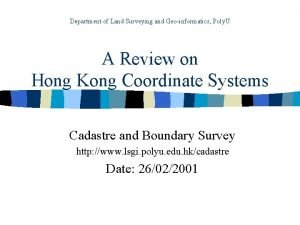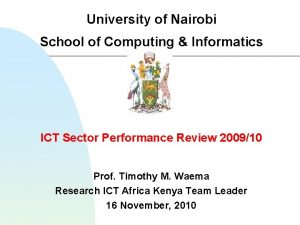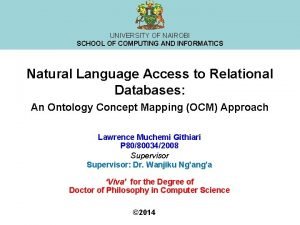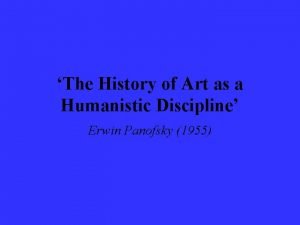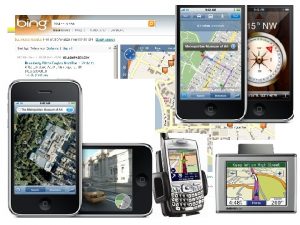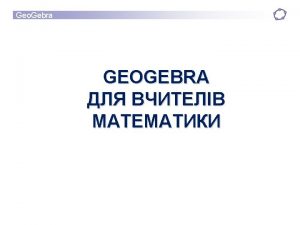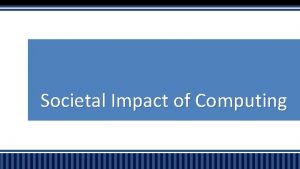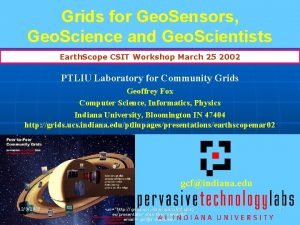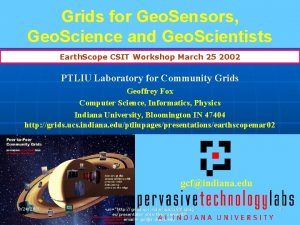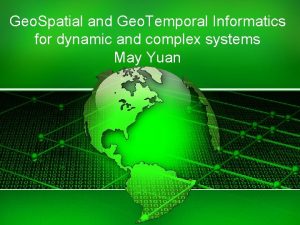Geo Informatics across Disciplines Why GeoSpatial Computing Societal








- Slides: 8


(Geo) Informatics across Disciplines!

Why Geo-Spatial Computing? • Societal: • Google Earth, Google Maps, Navigation, location-based service • Global Challenges facing humanity – many are geo-spatial! • Future of Computer Science (CS) is to address societal challenges! • Intellectual • Challenges CS assumptions, opporunities for new research • Ex. Shortest path problem – What algorithms are common today? • Are these correct if edge travel-times is not fixed (e. g. rush-hour, non-rush-hour)? • Is Dynamic Programming correct for spatio-temporal problems? • Ex. Classical Data Mining, e. g. Decision trees, Association Rules, Regression, … • Are these effective for spatial data? • ACM SIGSPATIAL • Special interest group started in 2008 to bring computer scientists together • Annual Conference: ACM GIS • Journals • Geo. Informatica: An Intl. Jr. on Advances in Computer Science for GIS

Shashi Shekhar Mcknight Distinguished University Professor URLs: www. cs. umn. edu/ ~shekhar Area: Spatial Databases, Spatial Data Mining, Geographic Info. Systems Teaching: • Fall 2010: Csci 5980: Computational Geo-Informatics (link) • Spring 2010: Csci 5708: Database Systems • 2010 -2011: Csci 8715: Spatial Databases Books, Surveys, etc. : • Developing a book on spatial and spatio-temporal data mining • Textbook, Encyclopedia, …

Research Group: Spatial Database, Data Mining, GIS URLs: www. spatial. cs. umn. edu Weekly Meetings: www. spatial. cs. umn. edu/schedule. html Current Projects: • NSF: CRI: IAD Infrastructure for Research in Spatio-Temporal and Context-Aware Systems … • NSF: III-CXT: Spatio-temporal Graph Databases for Transportation Science • NSF: IGERT: Non-equilibrium Dynamics Across Space and Time • NSF: Expedition: Understanding Climate Change: A Data Driven Approach • USDOD: Spatio-Temporal Pattern Mining for Multi-Juris. Multi-Temporal Activity Datasets • USDOD: Dynamic Purpose-Aware Graph Models for Composite Networks • USDOD: Cascase Models for Multi-Scale Spatio-temporal Pattern Discovery Current Ph. D. Students: • Pradeep Mohan • Mike Evans • Dev Oliver • Xun Zhou • Kwang. Soo Yang • Abdussalam Bannur • Viswanath Gunturi • Zhe Xiang

Spatial Databases: Representative Projects Evacutation Route Planning Parallelize Range Queries only in old plan Only in new plan In both plans Shortest Paths Storing graphs in disk blocks

Spatial Data Mining : Representative Projects Location prediction: nesting sites Nest locations Spatial outliers: sensor (#9) on I-35 Distance to open water Vegetation durability Co-location Patterns Water depth Tele connections

Spatio-Temporal (ST) Questions • How do we conceptualize spatio-temporal (ST) worlds? • How do we measure ST concepts, recognize them in (remotely) sensed information or in the field, and identify their accuracy and quality? • How do we represent ST concepts with incomplete/ uncertain information, with alternative data models, and possibly with multiple representations for the same data, in digital environments? • How do we store, access, and transform ST concepts, facilitating data sharing, data transfer, and data archiving, while ensuring minimum information loss? • How do we explain ST phenomena through the application of appropriate methods of forward or inverse models of physical and human processes? • How do we visualize ST concepts on a variety of media such as maps on electronic displays or animated displays ? • How do we use ST concepts to think about spatio-temporal phenomena, and to seek explanations for spatio-temporal patterns and phenomena? • Source: Adaptation from NCGIA proposal to NSF by Goodchild et al.
